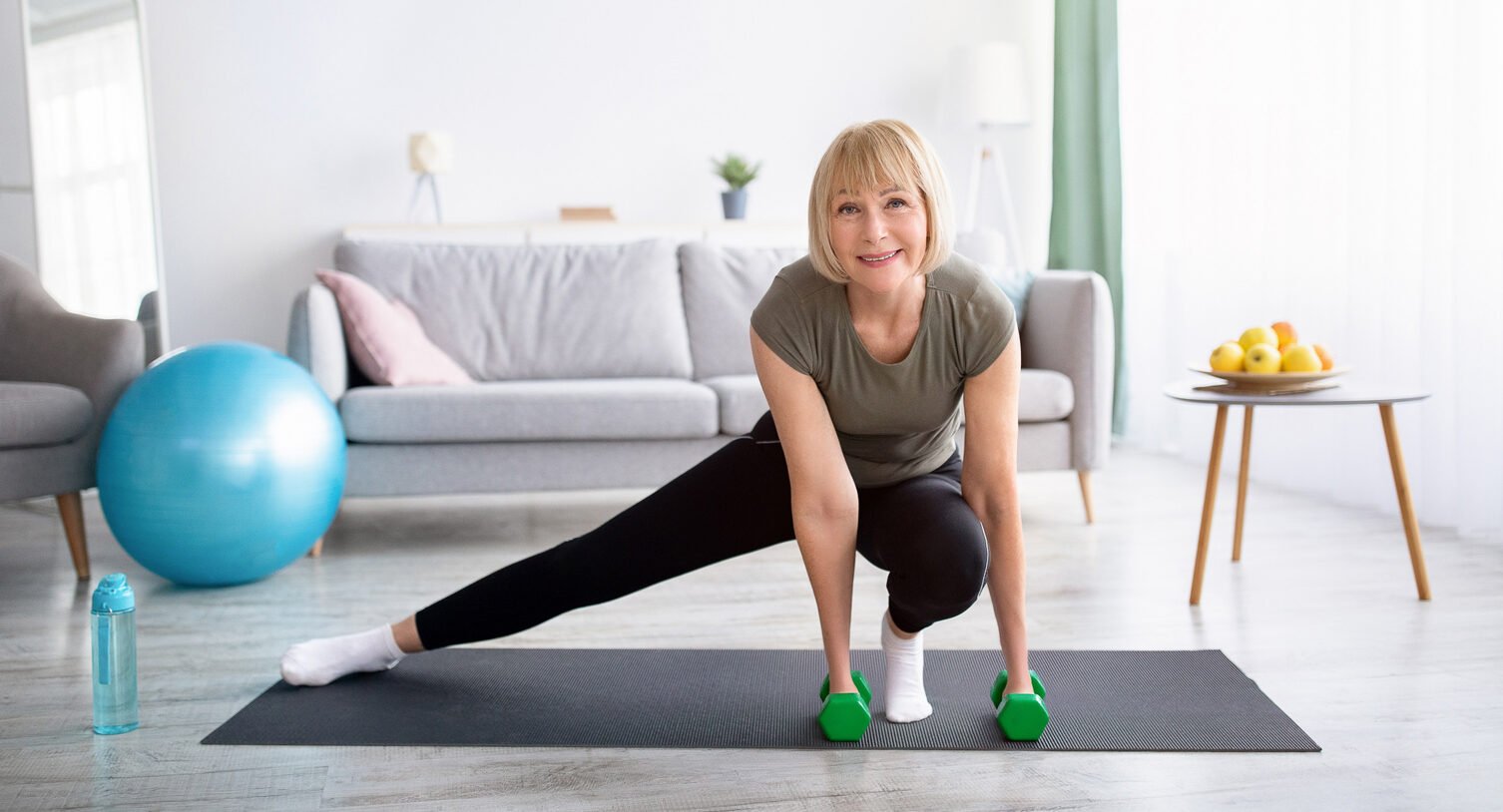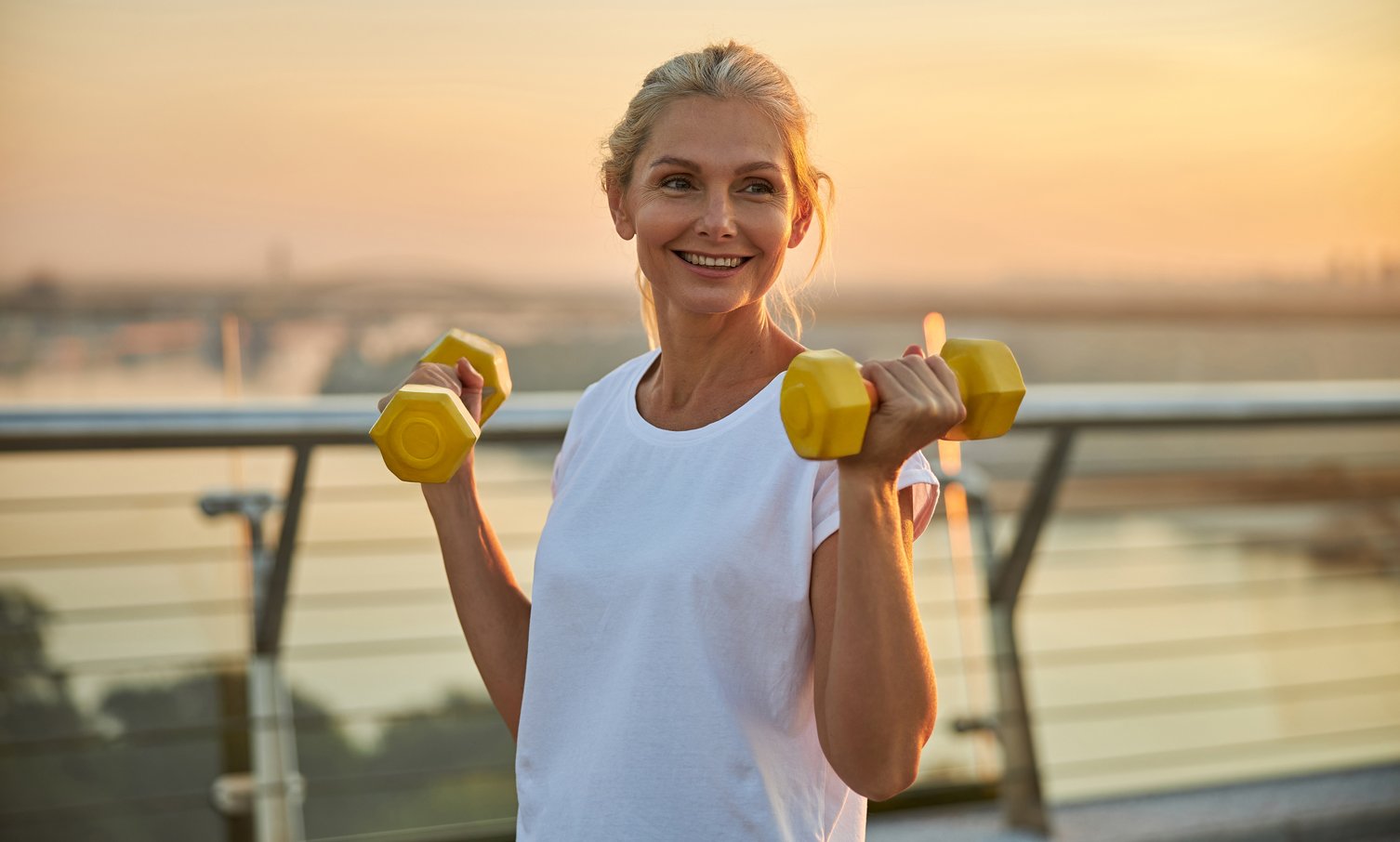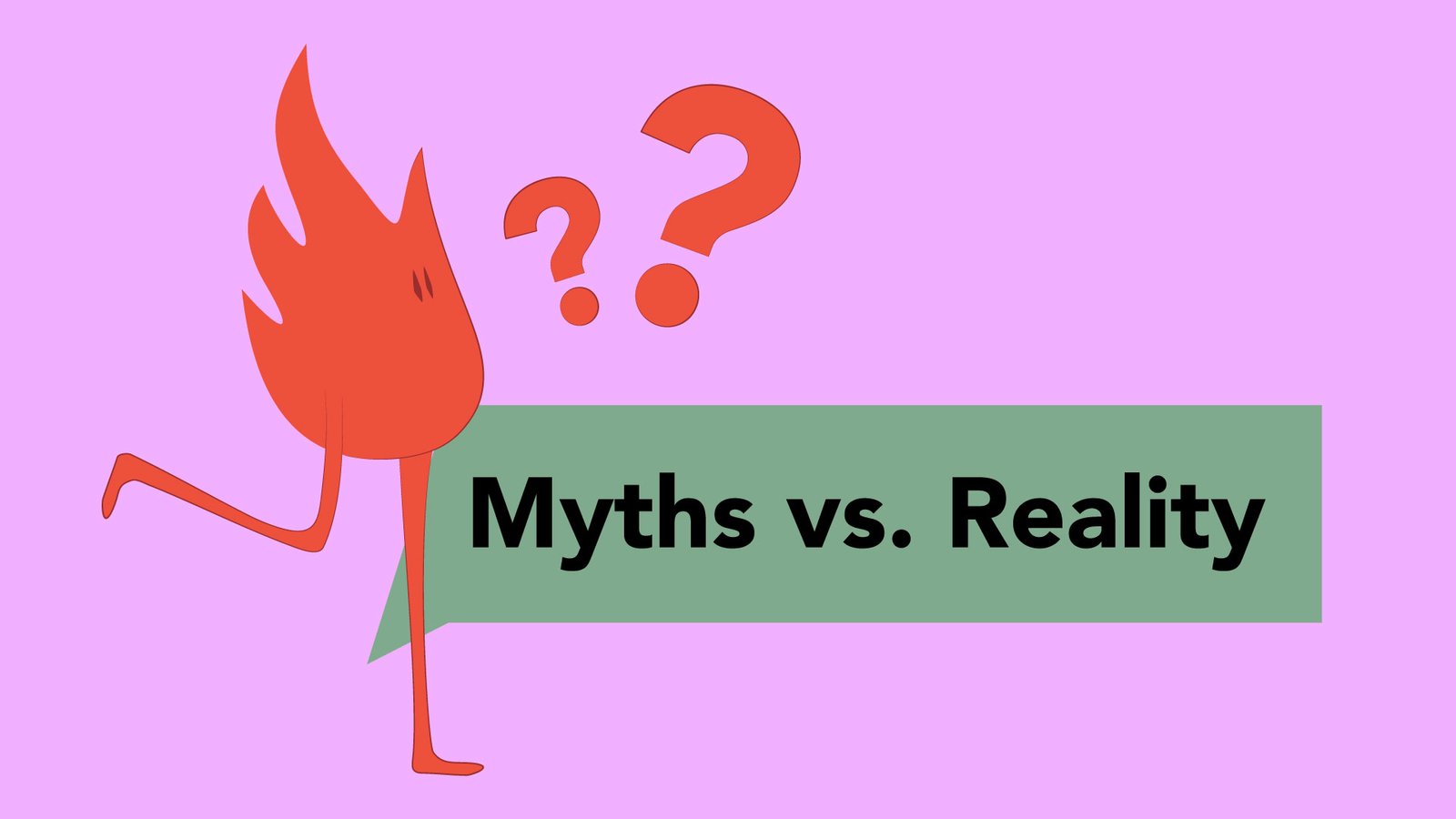Exercise and Weight Loss During Menopause: What Works and Why
Reading time 10 min

Reading time 10 min

Let’s start with the question many of us ask: “Why isn’t exercise helping me lose weight?” Especially during menopause, this becomes an even bigger challenge. Exercise and weight loss during menopause are more complicated than they seem, thanks to hormonal shifts, muscle loss, and changes in metabolism. Let’s break it down together.
How does exercise impact weight loss during menopause?
Exercise supports weight loss during menopause by maintaining muscle mass, boosting metabolism, reducing belly fat, and improving insulin sensitivity. A mix of strength training, HIIT, and cardio works best.
Weight loss, at its core, depends on creating a calorie deficit—burning more calories than you consume1. But during the menopause transition, hormonal shifts make this equation far more complex. Estrogen (a key hormone in regulating fat distribution and muscle mass) drops significantly, and this decline changes the rules of the game.
With age and declining estrogen, muscle mass naturally decreases in a process known as sarcopenia. Muscle is metabolically active, meaning it burns more calories than fat, even when you’re at rest. This loss of muscle mass results in a slower metabolism, making it more difficult to lose weight despite your best efforts2.
Solution?
Resistance training is an effective solution to counteract sarcopenia. Activities like lifting weights or doing bodyweight exercises help rebuild and maintain muscle, giving your metabolism a much-needed boost3.
Declining estrogen causes a noticeable shift in fat storage from the hips and thighs—the classic pear shape—to the belly4. This type of belly fat is not only harder to lose but is also metabolically active in ways that can promote inflammation and insulin resistance5.
Solution?
High-intensity interval training (HIIT) has proven to be an effective method for tackling belly fat. By combining short bursts of intense activity with periods of rest, HIIT optimizes fat burning and improves overall health6.
As you age, your body becomes increasingly “efficient” at storing energy. While this adaptation was a survival advantage in times of famine, it often becomes a source of frustration when trying to lose weight in the modern era.
Solution?
To combat this, varying your workouts is key to keeping your body guessing and preventing plateaus. Incorporating a mix of cardio, strength, flexibility, and balance training not only optimizes calorie burn but also supports overall fitness and metabolic health7, 8.

The World Health Organization (WHO) recommends at least 150 minutes of moderate activity (like brisk walking) or 75 minutes of vigorous activity (like running or HIIT) weekly. Add in two strength-training sessions, and you’re golden9. But here’s the catch: consistency beats intensity every time10. If you’re more likely to stick with walking your dog or dancing around your kitchen, do that. The best exercise is the one you actually enjoy or at least sustain. I have to warn you, not all exercise is created equal when it comes to weight loss during menopause.
Resistance training is one of the most effective options. It builds lean muscle, which increases your basal metabolic rate (BMR) and protects against bone loss—a common concern during menopause. Options like weightlifting, resistance bands, or Pilates are excellent ways to incorporate resistance training into your routine3
Cardiovascular exercise, or cardio, is another critical component. Activities like brisk walking, jogging, cycling, or swimming are excellent choices. To maximize your calorie burn, consider adding intervals, alternating between fast and moderate paces11. High-Intensity Interval Training (HIIT) is particularly effective for reducing abdominal fat and improving insulin sensitivity. This type of workout involves short bursts of high-intensity effort followed by rest or low-intensity recovery. Examples include sprinting, jumping jacks, or cycling at maximum effort for 20-30 seconds, followed by a one-to-two-minute recovery period12.
Finally, mind-body exercises like yoga, tai chi, or gentle stretching can play an indirect but essential role. These activities reduce stress and improve cortisol levels, which can positively impact weight loss. Lower stress levels often translate to better adherence to your overall health and fitness goals13, 14.
While exercise is critical, it’s not a standalone solution for weight loss. Exercise without dietary adjustments often leads to slower progress. The most effective approach combines regular exercise with mindful eating to achieve sustainable weight loss results15. Additionally, high cortisol levels from stress or poor sleep can counteract the benefits of exercise, making sleep management equally important in the weight loss equation16.


“I’m sweating buckets—this must be working!”
Sweat is not a measure of successfully burned calories. You can burn just as many calories in a brisk walk as in a gym class, depending on intensity and duration17.
“I can eat whatever I want as long as I work out.”
Sorry, no. A single muffin can undo the calories burned in a 30-minute jog. Exercise is a partner to good nutrition, not a replacement for it15.
“I need to run to lose weight.”
Running is great if you love it, but low-impact activities like swimming or walking are equally effective and much easier on your joints—especially if you’re already feeling those menopausal aches18.
Exercise during menopause isn’t just about weight loss; it’s about gaining strength, confidence, and energy. It’s a powerful tool to counteract hormonal changes, maintain muscle mass, and boost your overall well-being. The key is to approach it holistically – combining strength, cardio, and mind-body practices with a balanced diet and stress management.
Remember, this isn’t about perfection or quick fixes. It’s about finding what works for your body and creating a sustainable routine that helps you thrive through menopause and beyond. Think of exercise as an investment in Future You. The one who’s dancing at her granddaughter’s wedding, hiking Machu Picchu, or simply enjoying life on her terms. Your journey starts today.
Dr. Jūra Lašas
1.
Bortz, W. et al. Predictability of weight loss. (1968) https://doi.org/10.1001/JAMA.1968.03140150005002
2.
Davis, S. et al. Understanding weight gain at menopause. (2012) https://doi.org/10.3109/13697137.2012.707385
3.
Hunter, G. et al. Effects of resistance training on older adults. (2012) https://doi.org/10.2165/00007256-200434050-00005
4.
Tchernof, A. et al. Effects of the menopause transition on body fatness and body fat distribution. (1998) https://doi.org/10.1002/j.1550-8528.1998.tb00344.x
5.
Gauthier, M. et al. Decreased AMP-activated protein kinase activity is associated with increased inflammation in visceral adipose tissue and with whole-body insulin resistance in morbidly obese humans. (2011) https://doi.org/10.1016/j.bbrc.2010.11.127
6.
Mandrup, C. et al. Effects of high-intensity training on cardiovascular risk factors in premenopausal and postmenopausal women. (2017) https://doi.org/10.1016/j.ajog.2016.12.017
7.
Karatrantou, K. et al. Health-Promoting Effects of Serial vs. Integrated Combined Strength and Aerobic Training. (2016) https://doi.org/10.1055/s-0042-116495
8.
Godoy-Izquierdo, D. et al. Improvements in health-related quality of life, cardio-metabolic health, and fitness in postmenopausal women after a supervised, multicomponent, adapted exercise program in a suited health promotion intervention: a multigroup study. (2017) https://doi.org/10.1097/GME.0000000000000844
9.
Sternfeld, B. et al. Physical activity and health during the menopausal transition. (2011) https://doi.org/10.1016/j.ogc.2011.05.008
10.
Dubnov, G. et al. Weight control and the management of obesity after menopause: the role of physical activity. (2003) https://doi.org/10.1016/S0378-5122(02)00328-6
11.
Nunes, P. et al. Comparative effects of high-intensity interval training with combined training on physical function markers in obese postmenopausal women: a randomized controlled trial. (2019) https://doi.org/10.1097/GME.0000000000001399
12.
Grossman, J. et al. Meaningful weight loss in obese postmenopausal women: a pilot study of high-intensity interval training and wearable technology. (2019) https://doi.org/10.1097/GME.0000000000001013
13.
Jorge, M. et al. Hatha Yoga practice decreases menopause symptoms and improves quality of life: A randomized controlled trial. (2016) https://doi.org/10.1016/j.ctim.2016.03.014
14.
Xu, H. et al. Effects of mind-body exercise on perimenopausal and postmenopausal women: a systematic review and meta-analysis. (2024) https://doi.org/10.1097/GME.0000000000002336
15.
Cheng, C. et al. Effects of dietary and exercise intervention on weight loss and body composition in obese postmenopausal women: a systematic review and meta-analysis. (2018) https://doi.org/10.1097/GME.0000000000001085
16.
Chaput, J. Sleep patterns, diet quality and energy balance. (2014) https://doi.org/10.1016/j.physbeh.2013.09.006
17.
Kaiyala, K. Review of Measuring Metabolic Rates: A Manual for Scientists. (2021) https://doi.org/10.1086/714603
18.
Dupuit, M. et al. Effect of high intensity interval training on body composition in women before and after menopause: a meta‐analysis. (2020) https://doi.org/10.1113/EP088654